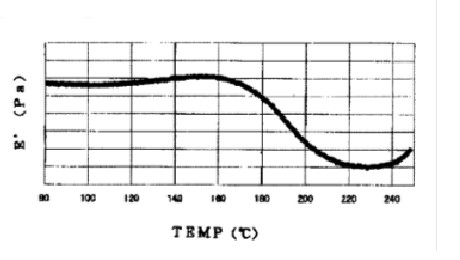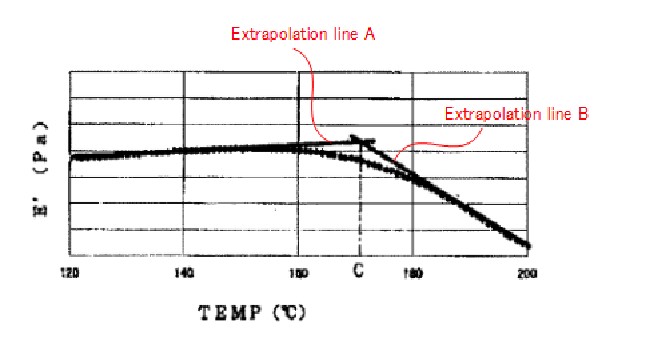2022.08.01 Patent
Case Introduction: Determination concerning Clarity in Consideration of Common General Technical Knowledge based on Industry Standards
1. Introduction
We will introduce a court decision (2017 (Gyo-ke) 10006 (“Case A”), 10015 (“Case B”)) in which clarity (Patent Law Article 36(6)(ii)) was accepted by interpreting claims based on descriptions in ASTM standards and JIS standards. This decision is one of the subjects of study in Trial and Appeal Practitioner Study Group (2021) organized by Trial and Appeal Department of the Japan Patent Office. The Trial and Appeal Practitioner Study Group deliberates on analysis of appeal/trial decisions and court decisions, and is participated by practitioners including employees of intellectual property departments in companies, patent attorneys, lawyers, chief appeal examiners and appeal examiners of the Japan Patent Office.
2. Background of the Cases
A defendant in Case A, who is a plaintiff in Case B, is a patentee of the present patent (Patent No. 4886810, hereinafter also referred to as “Patent”), titled “Run-Flat Tire”.
A plaintiff (i.e. demandant) in Case A, who is a defendant in Case B, filed a request for a trial for invalidation against the Patent (Invalidation No. 2015-800158), and the patentee requested corrections. This trial for patent invalidation brought a decision to invalidate claims 1-4 of the Patent as violating clarity requirements and to maintain claims 6-13 as involving inventive step (Article 29(2) of the Patent Law).
The demandant of the trial for patent invalidation and the patentee appealed to the Intellectual Property High Court, seeking rescission of the trial decision. The Intellectual Property High Court granted the patentee’s request with regard to claims 1-4 and rescinded the trial decision, and dismissed the request with regard to claims 6-13 made by the demandant.
3. Invention after Correction
The invention of claim 1 of the Patent after correction (hereinafter also referred to as “Invention 1”) is shown below.
[Claim 1]
A run-flat tire comprising:
side wall portions reinforced with a rubber reinforcing layer,
wherein in a curve exhibiting a change in dynamic storage modulus during elevation of temperature, the rubber reinforcing layer has an intersection of an extrapolation line A of a portion in which a dynamic storage modulus shows an approximately linear change before a rapid decrease at temperatures higher than 100 °C and an extrapolation line B of a portion in which the dynamic storage modulus rapidly decreases, at a temperature of 170 °C or higher, and
wherein the rubber reinforcing layer comprises a rubber composition including natural rubber.
The following figures are also attached to the corrected specification.
FIG. 2

FIG. 3

4. Summary of Decision in Trial for Patent Invalidation
In the trial decision, claim 1 was determined unclear because the temperature at the intersection of the extrapolation lines A and B cannot be unambiguously determined mainly for the reasons listed below.
(1) Paragraph [0011] of the corrected specification states that “Extrapolation line A is a line obtained by extrapolation of the portion in which the dynamic modulus shows an approximately linear change before a rapid decrease at temperatures higher than 100 °C in the curve exhibiting the change in dynamic storage modulus during elevation of temperature (FIGs 2 and 3 of the corrected specification)” and “Extrapolation line B is a line obtained by extrapolation of the portion in which the dynamic modulus rapidly decreases“. However, a person skilled in the art cannot understand which parts of the figure are the “rapid decrease” part, “the portion in which the dynamic modulus shows an approximately linear change”, and “the portion in which the dynamic modulus rapidly decreases” even after considering the corrected specification and common general technical knowledge.
(2) The patentee submitted “JIS Testing Methods for Transition Temperatures of Plastics, JIS K7121-1987” as evidence and stated that a way of drawing the extrapolated lines A and B are unambiguously determined. However, this evidence does not cover rubber compositions as claimed in the Invention 1, and this argument cannot be adopted.
5. Summary of Suit against Trial Decision
(1) Main Argument of Patentee
In ASTM standards, a glass transition temperature (Tg) is determined by extrapolation of a baseline in a transition temperature test using thermal analysis of rubber compositions. Regardless of the fact that the graph used in this process is not mathematically precise, extrapolation is not defined. Therefore, a person skilled in the art can clearly understand the Invention 1 based on the common general technical knowledge about a method of measuring the glass transition temperature.
(2) Main Argument of Demandant of Trial for Invalidation
Even if the method of measuring the glass transition temperature is common general technical knowledge, the way of drawing the extrapolation lines A and B is not clearly defined in the Invention 1 because the phenomenon of the glass transition and the phenomenon of the Invention 1 are different.
Furthermore, in the specification, a rubber composition having a temperature of 169 °C at an intersection of the extrapolated lines A and B is regarded as Comparative Example, while a rubber composition having a temperature of 171 °C at the intersection is regarded as Example. Thus, the difference of 2 °C is an important issue in the Invention 1. Thus, ASTM standards cannot be referred to as reference.
Therefore, the statement of claim 1 is unclear.
(3) Judgment of the Court
Whether an invention to be patented is clear should be judged not only from the statement of the claims, but also from the viewpoint of whether the statement of the claims is so unclear as to unduly harm the interests of third parties, taking into consideration the description and drawings of the specification attached to the application and based on common general technical knowledge of a person skilled in the art at the time of filing of the application.
It is clear that the “rapid decrease” portion in claim 1 means the portion showing the steepest slope going down from the left to the right in the figure exhibiting the change in dynamic storage modulus during elevation of temperature (FIGs 2 and 3 of the corrected specification). Since the degree of slope of the steepest portion is unambiguously determined, the way of drawing the “extrapolation line of the portion in which the dynamic modulus rapidly decreases” is also clearly determined. Since the “rapid decrease” is determined relatively, and is not specified by an absolute value of the degree of slope, the statement of the demandant of trial for invalidation is invalid.
With regard to “extrapolation of the portion showing an approximately linear change“, in the ASTM standards formulated and issued by the American Society for Testing and Materials that is the world’s largest standardization organization, an extrapolation line of a portion showing an approximately linear change is drawn without specifically defining such portion when calculating a glass transition temperature of a polymer from a graph of physical properties exhibiting a change during elevation of temperature.
In the JIS standards, when calculating a glass transition temperature of a plastic from a graph of physical properties exhibiting a change during elevation of temperature, the JIS standards use a straight line extended from a “baseline” that “may be considered, in some cases, a straight line in a narrow temperature range” as the extrapolation line.
In this way, when calculating glass transition temperatures of polymers and plastics, it is considered to have been a matter of common general technical knowledge to grasp a portion showing an approximately linear change from a graph of physical properties exhibiting a change during elevation of temperature, without specifying a condition for a change in slope within a specific temperature range. Since polymers, plastics, and rubbers are all related to polymers, a person skilled in the field of heat resistance of rubber compositions naturally possesses the above common general technical knowledge about polymers, which are the main components of the rubber compositions. Therefore, based on the above common general technical knowledge, a person skilled in the art can draw the extrapolated line of “the portion showing an approximately linear change” in the figure exhibiting the change in dynamic storage modulus during elevation of temperature, even if detailed conditions are not specified.
The demandant of trial for invalidation also argues that the ASTM standards cannot be used as a reference because the difference of 2 °C is an important issue in the Invention 1.
However, at the priority date of the original application of the Patent, a focused temperature range of rubber compositions reinforcing side parts of a run flat tire was in a range of 150 °C or less at the highest. Claims 6 and 7 of the Patent focus on a temperature range from 180 °C to 200 °C for the dynamic storage modulus of the rubber composition reinforcing the side parts. The Invention 1 defines the above technical concept as a rubber composition having a temperature of 170 °C or higher at the intersection of the extrapolated lines A and B. In a graph exhibiting a change in dynamic storage modulus of a rubber composition of the same type as Invention 1, a difference occurred in such an intersection of the extrapolated lines A and B, depending on how the lines are drawn, is only 1 °C.
In this way, the temperature of 170 °C specified as the temperature at the intersection of the extrapolated lines A and B is derived by focusing on the change in dynamic storage modulus of the reinforcing rubber composition during the temperature change from 180 °C to 200 °C, and the difference occurred in such an intersection, depending on how the lines are drawn, is only 1 °C. Therefore, the statement of the claims specifying the structure of the rubber composition with the temperature at the intersection of the extrapolation line A and the extrapolation line B cannot be found to be as unclear as to unduly harm the interests of third parties.
Therefore, the recitations of claim 1, such as “a rapid decrease”, “extrapolation of the portion rapidly decreases”, and “extrapolation of the portion showing an approximately linear change” are clear and do not violate the clarity requirements.
6. Consideration
The court determined that the “rapid decrease” portion means “the portion which shows the steepest slope going down from the left to the right”, and the “extrapolation line of the portion rapidly decreases” and “extrapolation of the portion showing an approximately linear change” are clear based on the descriptions in ASTM standards and JIS standards. However, the terms of “rapid” and “steepest” are not synonymous in nature, giving us an impression that the interpretation was made in favor of the patentee.
In addition, nevertheless of the difference of 1 °C at the intersection depending on how to draw the extrapolated lines A and B, the court determined that the Invention 1 is not so unclear as to unduly harm the interests of third parties based on the judgment criteria indicated in 2008 (Gyo-ke) 10107, 2009 (Gyo-ke) 10434 , and 2014 (Gyo-ke) 10254. In this way, when judging violations of the clarity requirements, it is necessary to fully consider not only common general technical knowledge but also whether there is a possibility of unduly harming the interests of third parties.
Edited by Makoto Kumazaki

